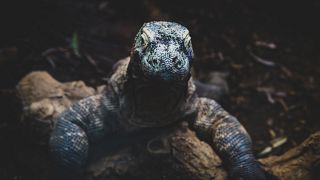
The Komodo dragon is a well-known example of a phenomenon referred to as the ‘island effect.’ - Copyright Max Letek
By Rebecca Ann Hughes • Updated: 19/03/2023 -
From dwarf hippos to oversized mice, island-dwelling animals have evolved in extraordinary ways.
The dodo - a giant flightless pigeon - is a well-known example of a phenomenon referred to as the ‘island effect.’
One consequence of the ‘island effect’ is animals going one way or the other, evolving into either giants or dwarfs.
A new study has also now found that these curious creatures are at a higher risk of extinction than other animals.
Here’s why many island species have died out and where you can still see the ones in existence today.
What is the island effect?
Mammals, birds, reptiles, and some amphibians living on islands have been shown to evolve in radically different ways to their mainland relatives.
According to the ‘island rule,’ small species tend to evolve to be much bigger while larger species shrink.
Around 10,000 years ago, islands in the Mediterranean were covered in dwarf hippos and elephants.
At the other end of the scale, the dodo of Mauritius and the Komodo dragon are examples of oversized species.
A 2021 study found that extent of animal dwarfism or gigantism depends partly on the size and isolation of the island.
Smaller, more remote islands resulted in more pronounced size changes in species.
The study also found that factors such as limited resources and space were a major cause of animals downsizing as they adapted to smaller habitats.
On the other hand, lower competition and the lack of predators meant species were often freed from evolutionary restrictions in size.
What island effect animals exist today?
Although many island species are now extinct, there are several you can still find today.
On the Philippine island of Mindoro there is a diminutive buffalo that measures 21 per cent the size of its closest continental relative.
Nearby islands are home to a spotted deer that is 26 per cent the size of its mainland equivalent.
In Jamaica’s Hutia, a giant rodent measures four and a half times its closest mainland relative.
Island giants and dwarfs are at a greater risk of extinction
According to a recent study published in the journal Science, the plus sized and pint sized island creatures are subject to an elevated extinction risk.
After examining 1,231 existing species and 350 extinct ones over the last 23 million years, the researchers found that those with the most dramatic size changes had the highest extinction risk.
This threat is also increasing, the report found, endangering some of the world’s most fascinating species.
The arrival of human settlers on islands raised the extinction rate by more than ten times.
People bring diseases and invasive predators, disrupting island ecosystems. Through hunting and habitat destruction, humans also imperil island species.
No comments:
Post a Comment